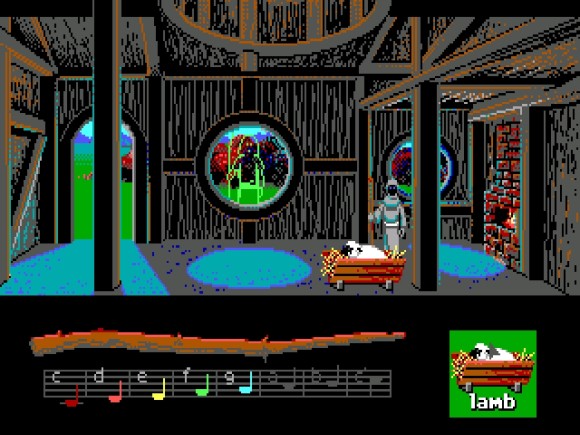I have been aware of the existence of Loom ever since meeting the pirate in Monkey Island wearing an “Ask Me About Loom” badge who is otherwise monosyllabic, but who spouts flowery ad copy for the game at you if you Ask Him About Loom. A more serious, fantasy-themed adventure game from the same people who made one of my favourite games ever? Sounds great, sign me up! Unfortunately despite first hearing about Loom in 1995, I was not actually in a position to play Loom until 2009, as the game had almost immediately disappeared from UK shops and wasn’t available on digital distribution for another twenty years, and by that point I had all but forgotten Loom existed. Not only that, but so did nearly everyone else; it seems that despite the generous advertising plug, the release of Monkey Island in the same year massively overshadowed that of Loom. LucasArts were known as the Monkey Island studio afterwards, not the Loom studio1, and while Loom is more fondly remembered than, say, Zak McKracken, it remains little more than a footnote at the bottom of the list of LucasArts’ greatest achievements. Yet there remains a cult following of people who talk fondly about Loom, and not just because they’re characters in a game who have been explicitly written to advertise Loom, and so I was genuinely interested in experiencing Loom for the first time as part of this series just so that I could see what it was about.
- Now, you might wonder why LucasArts weren’t known as the Star Wars studio at this point since they were part of Lucasfilm and should have had easy access to the IP. The answer is very simple: the rights to make Star Wars video games had been sold to Atari years earlier, and so the first titles from LucasArts had to be based on original IP — this is why we got Maniac Mansion, Zac McKracken, Loom and Monkey Island instead of a cavalcade of Star Wars tie-ins. LucasArts didn’t get the rights back until 1992, with X-Wing appearing the following year. ↩

